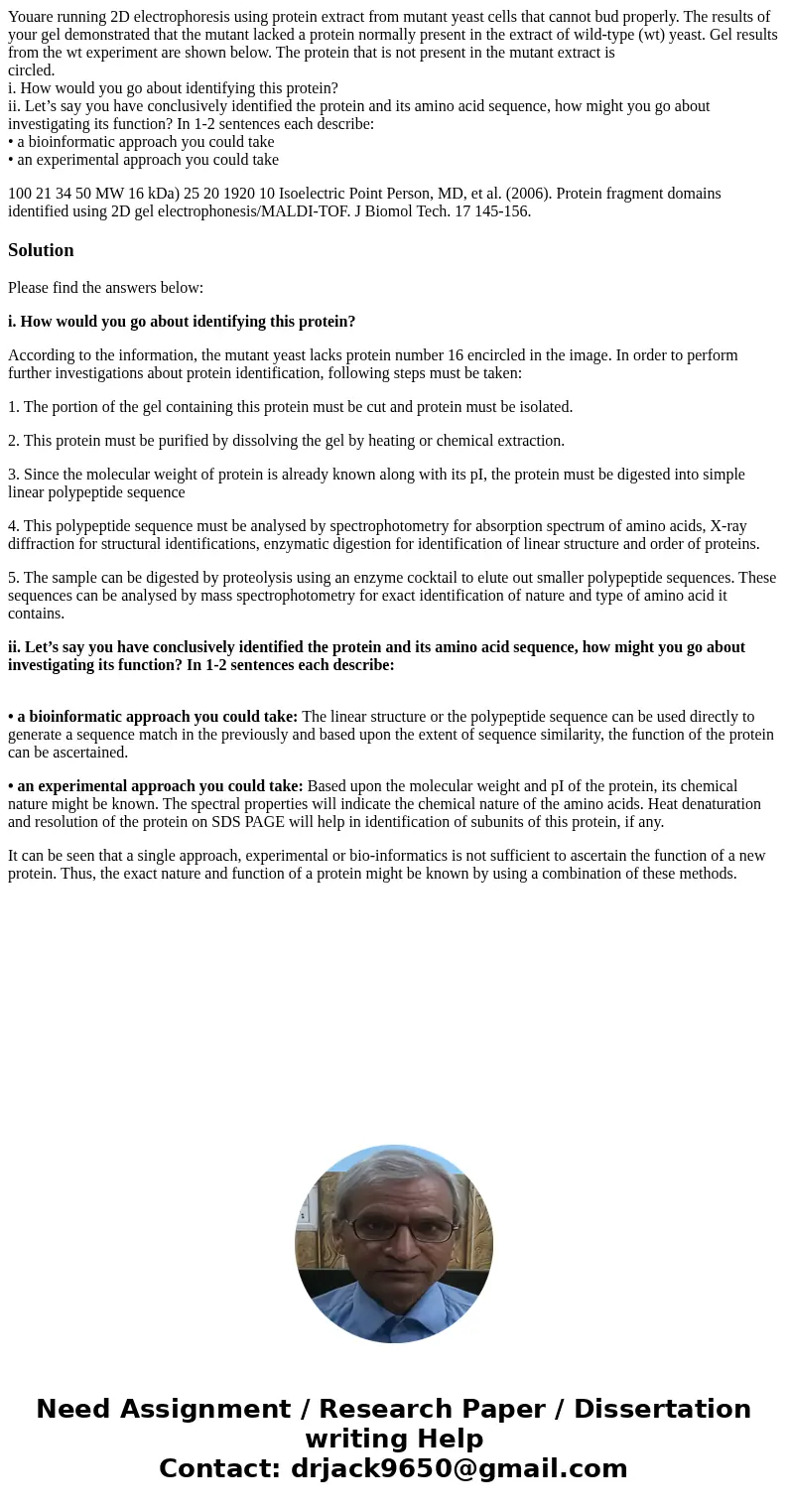Youare running 2D electrophoresis using protein extract from
Youare running 2D electrophoresis using protein extract from mutant yeast cells that cannot bud properly. The results of your gel demonstrated that the mutant lacked a protein normally present in the extract of wild-type (wt) yeast. Gel results from the wt experiment are shown below. The protein that is not present in the mutant extract is
circled.
i. How would you go about identifying this protein?
ii. Let’s say you have conclusively identified the protein and its amino acid sequence, how might you go about investigating its function? In 1-2 sentences each describe:
• a bioinformatic approach you could take
• an experimental approach you could take
Solution
Please find the answers below:
i. How would you go about identifying this protein?
According to the information, the mutant yeast lacks protein number 16 encircled in the image. In order to perform further investigations about protein identification, following steps must be taken:
1. The portion of the gel containing this protein must be cut and protein must be isolated.
2. This protein must be purified by dissolving the gel by heating or chemical extraction.
3. Since the molecular weight of protein is already known along with its pI, the protein must be digested into simple linear polypeptide sequence
4. This polypeptide sequence must be analysed by spectrophotometry for absorption spectrum of amino acids, X-ray diffraction for structural identifications, enzymatic digestion for identification of linear structure and order of proteins.
5. The sample can be digested by proteolysis using an enzyme cocktail to elute out smaller polypeptide sequences. These sequences can be analysed by mass spectrophotometry for exact identification of nature and type of amino acid it contains.
ii. Let’s say you have conclusively identified the protein and its amino acid sequence, how might you go about investigating its function? In 1-2 sentences each describe:
• a bioinformatic approach you could take: The linear structure or the polypeptide sequence can be used directly to generate a sequence match in the previously and based upon the extent of sequence similarity, the function of the protein can be ascertained.
• an experimental approach you could take: Based upon the molecular weight and pI of the protein, its chemical nature might be known. The spectral properties will indicate the chemical nature of the amino acids. Heat denaturation and resolution of the protein on SDS PAGE will help in identification of subunits of this protein, if any.
It can be seen that a single approach, experimental or bio-informatics is not sufficient to ascertain the function of a new protein. Thus, the exact nature and function of a protein might be known by using a combination of these methods.

 Homework Sourse
Homework Sourse